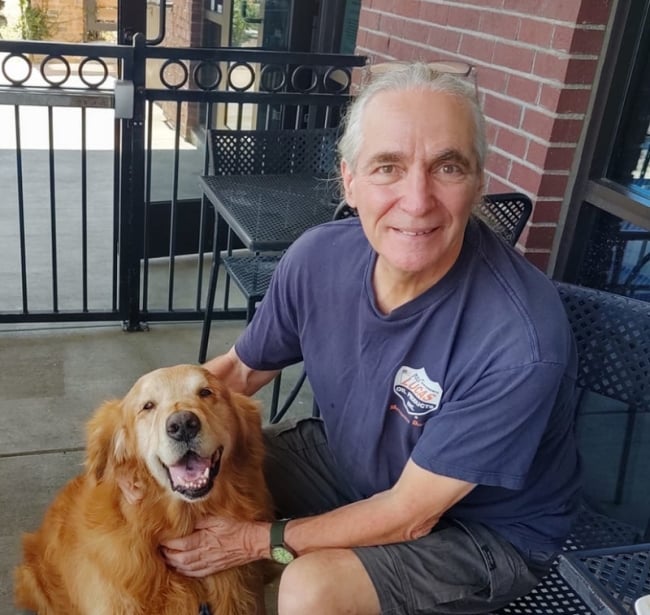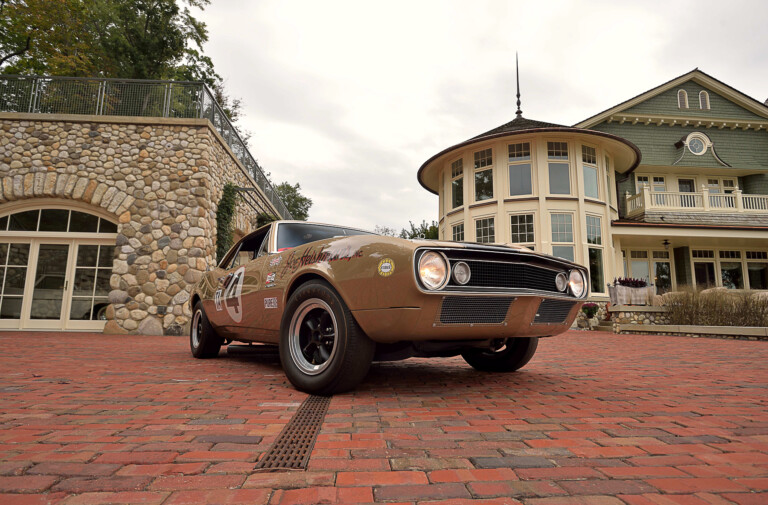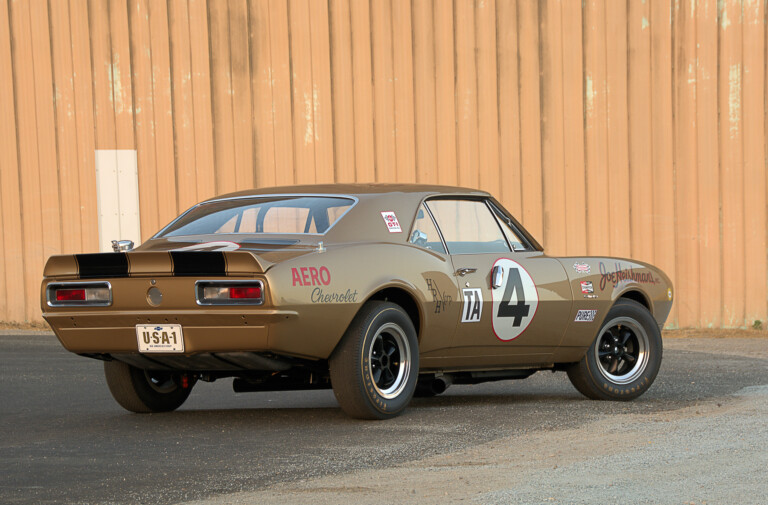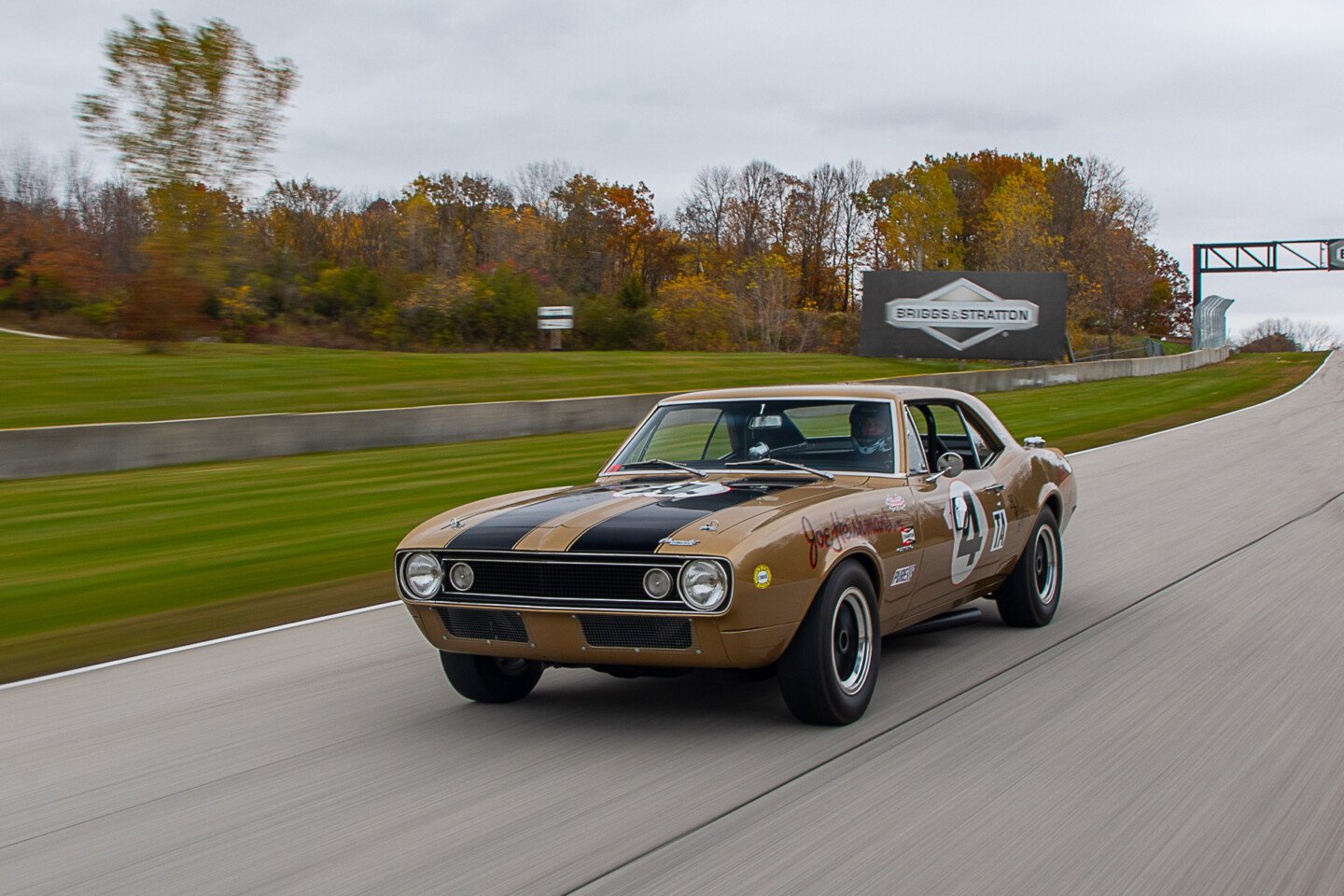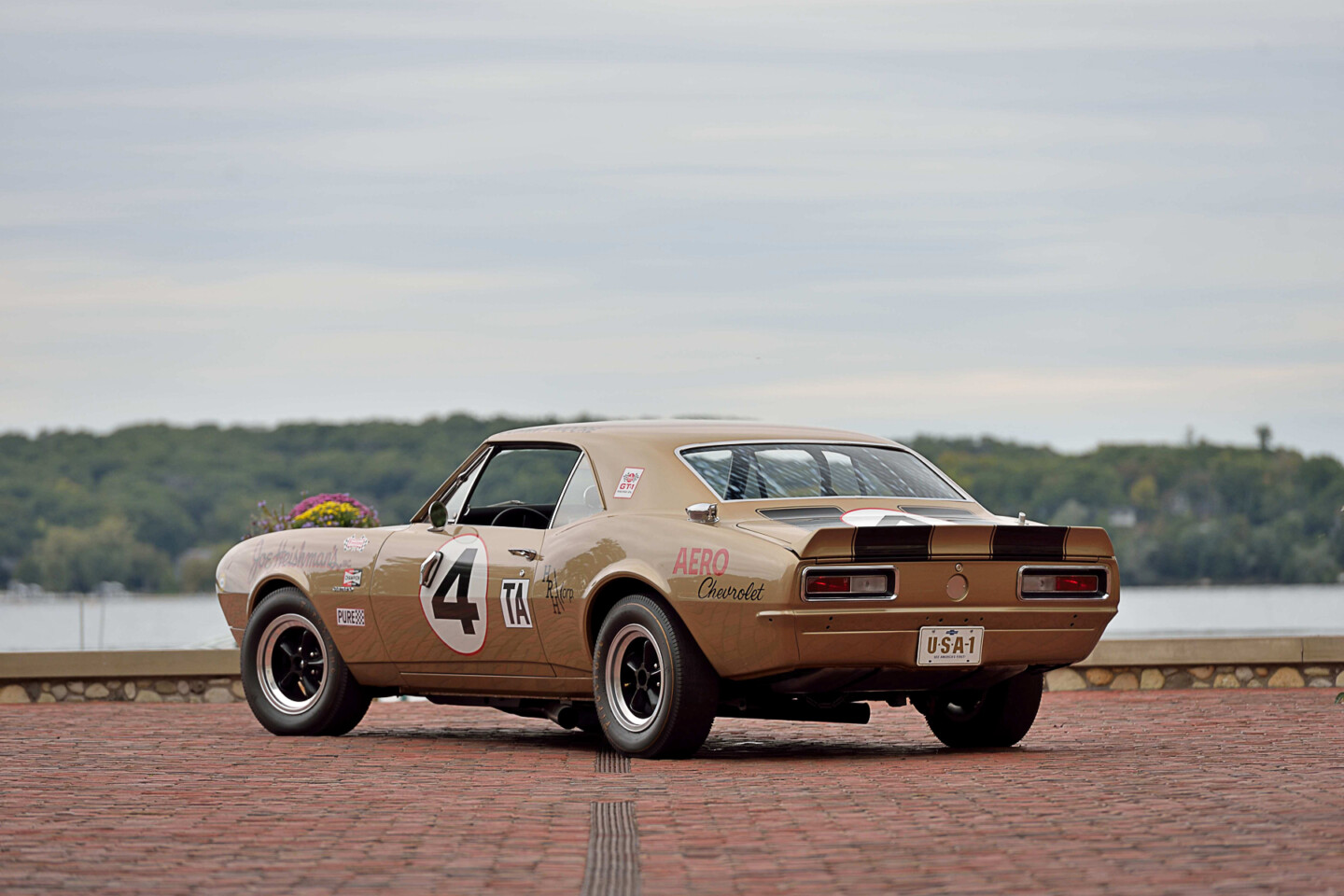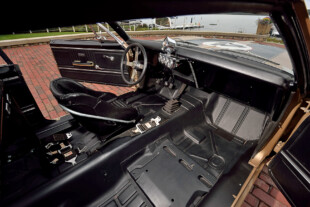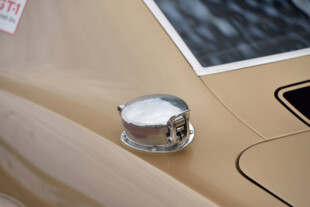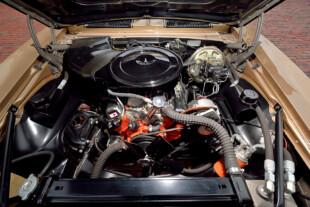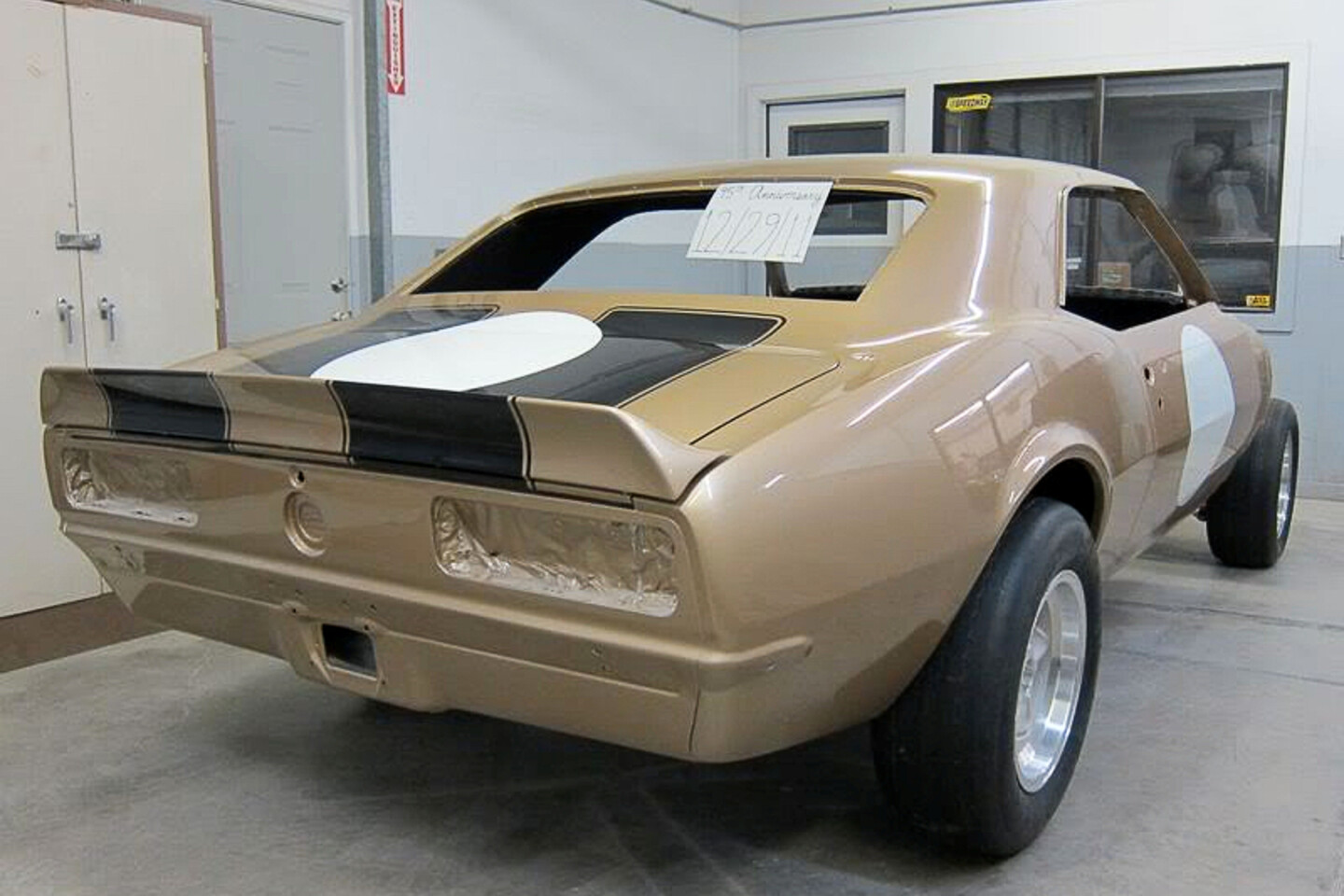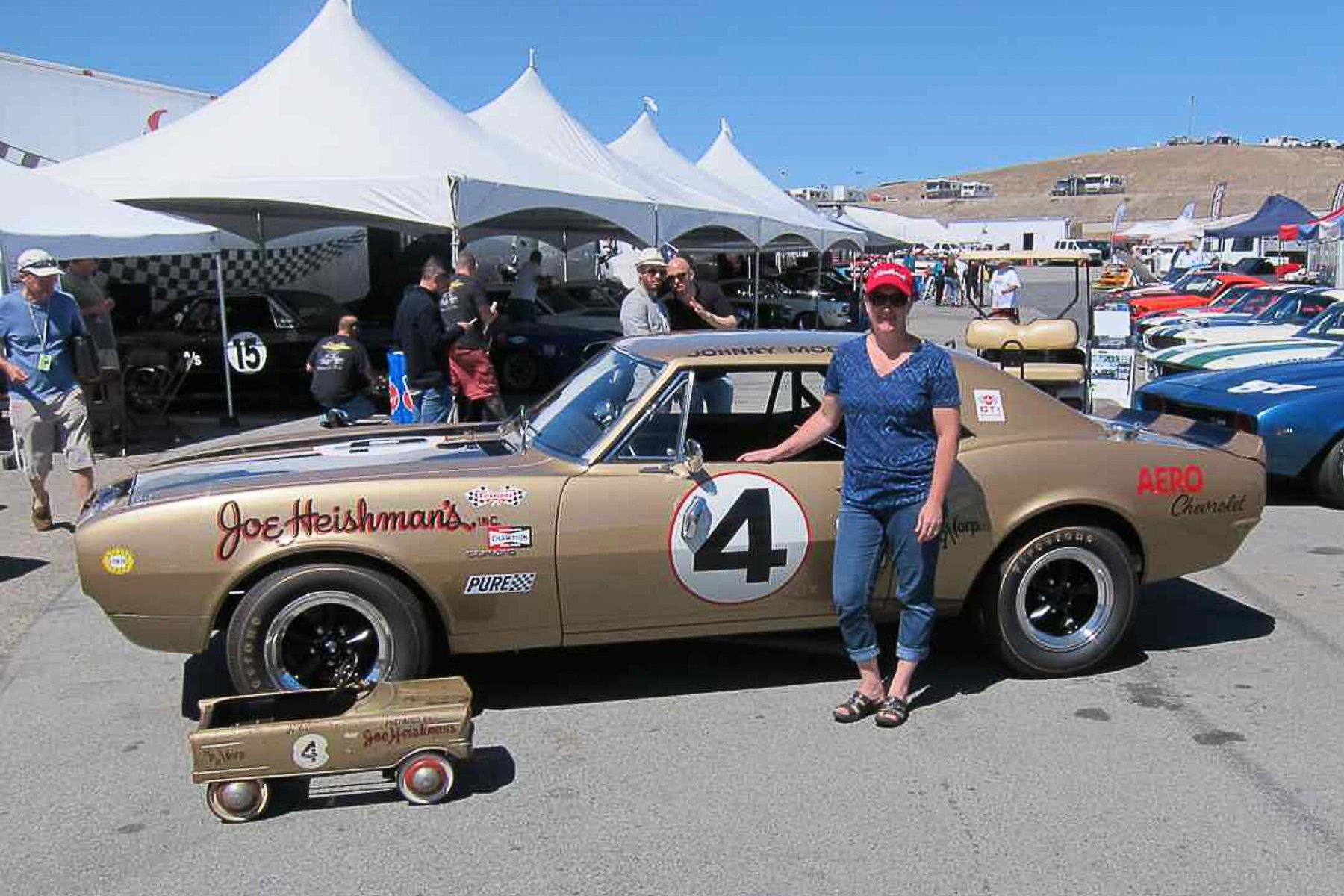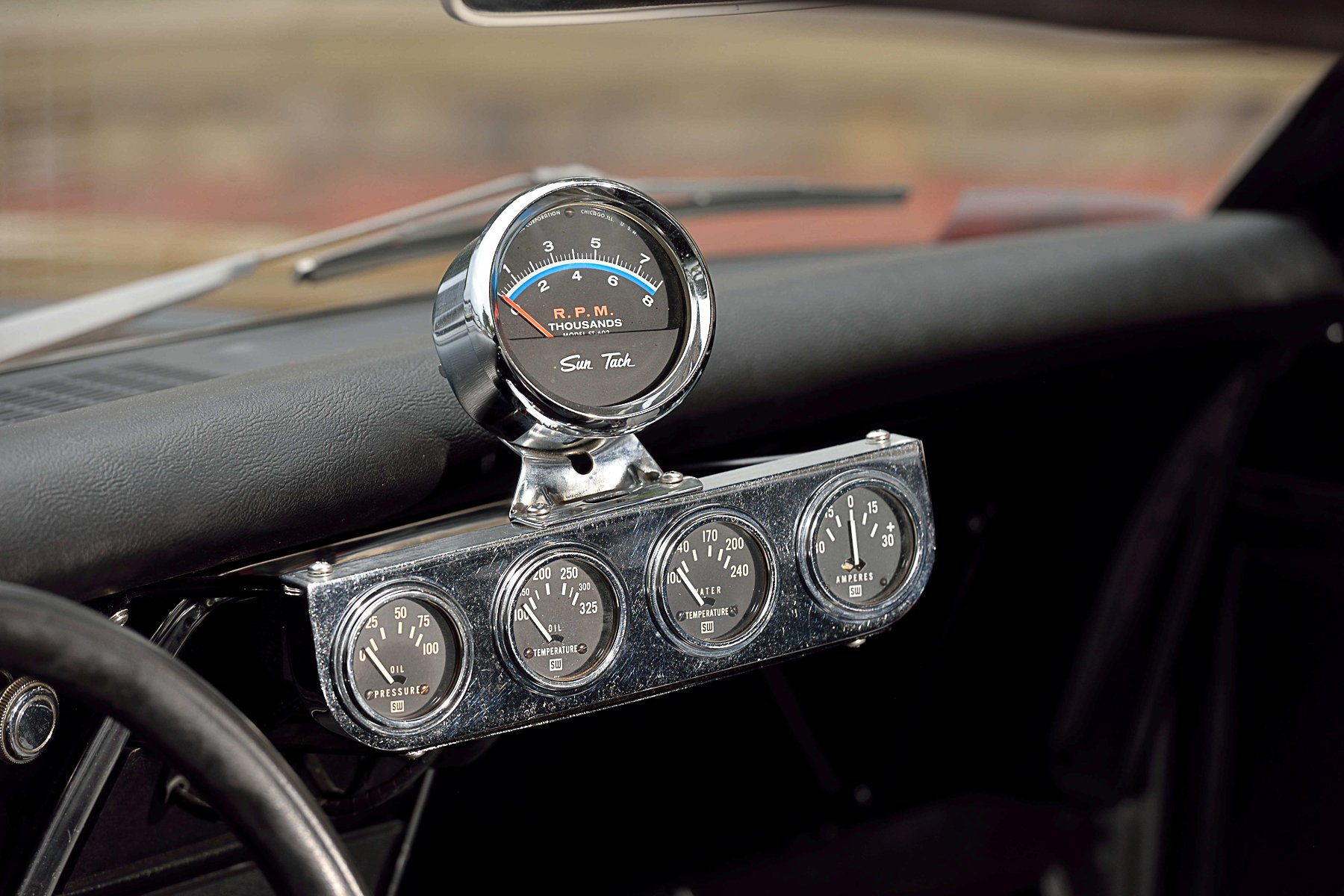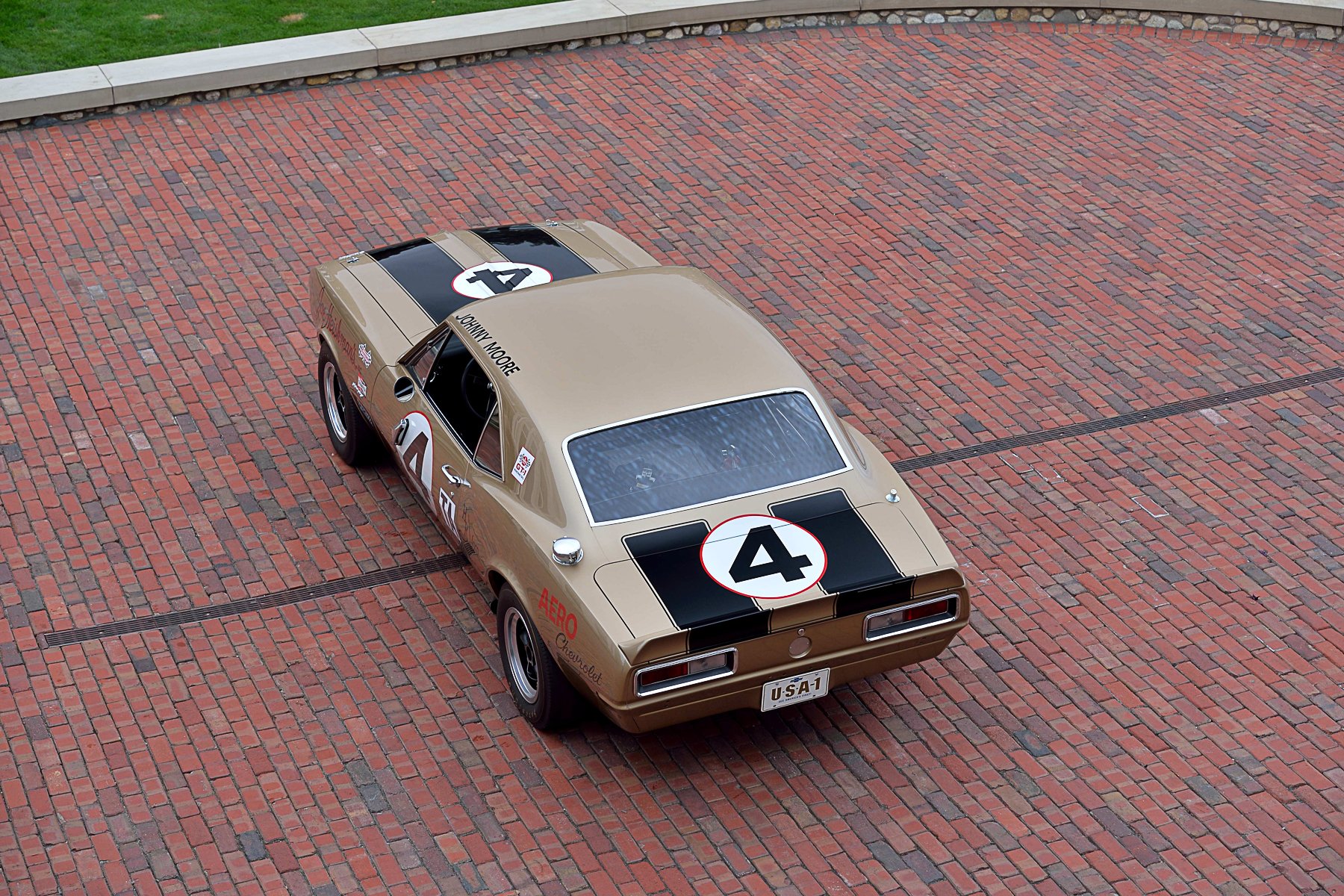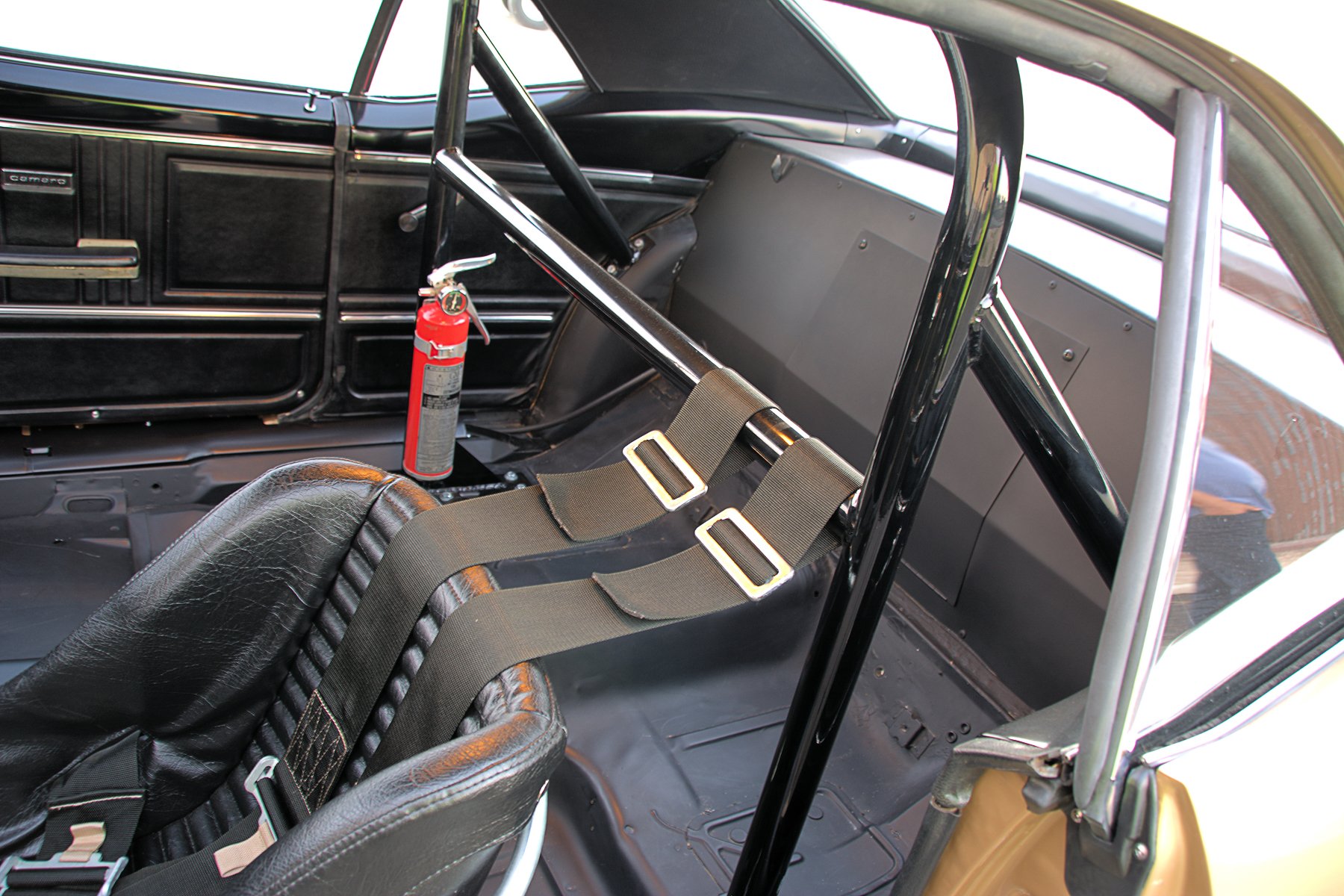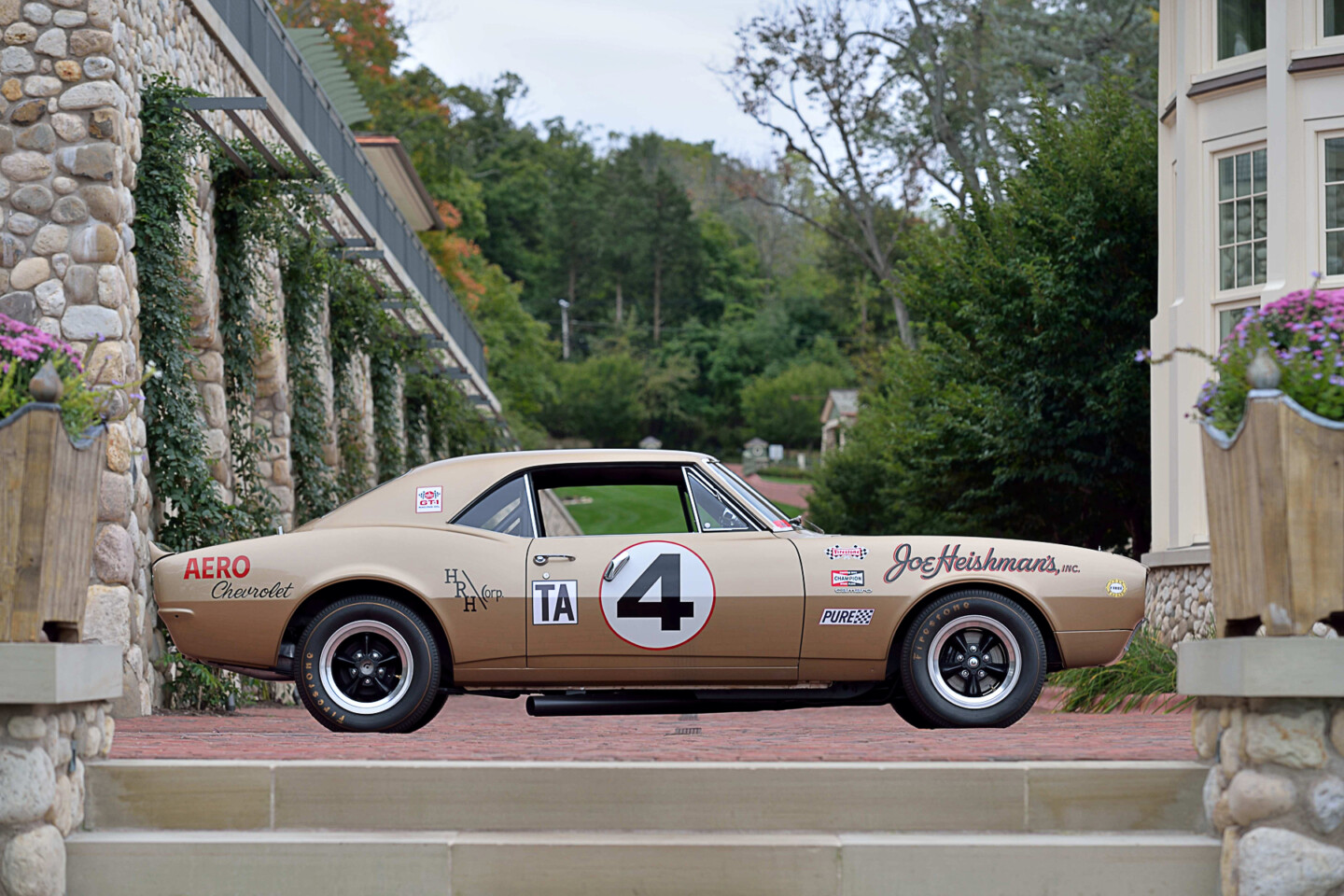Back in 2016, I got a lead on a car that was purported to be the very first of the 602 1967 Chevrolet Camaro Z-28s produced. As I recall, the lead came from a small blurb I spotted in the Reader’s Rides department in Hot Rod magazine. Since the car’s location was up California’s central coast north of Santa Barbara, with a little detective work, I was able to track down the car’s owner, Jon Mello. As he was finishing up some details for the car’s debut at that year’s Monterey Historic Races at Laguna Seca, we agreed to meet up in early September for me to photograph the car after Laguna Seca.
A Brief History Of The Z-28
Trans-Am racing was just getting started, with the Sports Car Club of America launching the season in 1966. Comprised of two classes, under two liters and over two liters, ultimately attracting major manufacturer support from Detroit’s Big Three as well as top driver talent from the likes of Jerry Titus (class champion in a Mustang), A.J. Foyt, Richard Petty, Jacky Ickx, Horst Kwech, Gaston Andrey, and Tony Adamowicz.
The year 1967 was a major turning point for the series. Since there were no factory-sponsored racing programs at GM at the time, it required a two-pronged approach to be competitive. With the Chevrolet Camaro being introduced in the fall of 1966 for the 1967 model year, it took a clandestine effort to get a competitive Bow Tie entry to the 1967 starting grid. Enter Vince Piggins, a veteran Chevrolet engineer by way of Hudson. Piggins came up with the initial solution to get a small-block V8 to slot in just under the five-liter limit: combine the bore of the 327 cubic-inch engine with the short stroke of the 283 cubic-inch version. The result: the high-revving, 302 cubic-inch version of the legendary small-block Chevrolet V8.
Within Chevrolet, there was some discussion as to what to call the package, which would also include twin paint stripes, the stiff F41 heavy-duty suspension, a faster steering ratio, and 15-inch slotted Rally wheels with bigger-than-standard 7.35×15 rubber. What would be called the Regular Production Option (RPO) Z-28 would require such options as power-assisted front disc brakes and a close-ratio four-speed manual transmission. It was decided to call the homologation special (602 were built in 1967) the Z-28. Except for air conditioning and an automatic transmission (or a convertible body), it was possible to equip a Z-28 with just about every option on the extensive 1967 Camaro list.
Racing In His Blood
In late December 1966, the first batch of Z-28s rolled down GM’s Norwood, Ohio, assembly line. The car you see pictured here is the very first, owned from 2002 to 2017 by Jon Mello. Jon has sports car racing in his blood. His parents were tech inspectors for the SCCA and, as a family, all attended Can-Am and Trans-Am races back at Road America from 1970 to 1974.
“I had always dreamed of having a Trans-Am Camaro, as I really enjoyed watching the pony cars run on the race track and the great sounds the V8 engines made,” recalls Jon. “I never thought I’d come to own a car with real Trans-Am history, let alone the first Z-28.
“My parents belonged to a sports car club, and I remember testing a couple of old Mini Coopers and a BMW 2002 as a potential first car.” Jon continues. “A guy at my first job had a 1966 GTO for sale with a 455 in it. I tried to talk my dad into letting me get it, but he picked the car apart. He said, ‘Why don’t you get something neat like a Z-28 instead?’ and the rest is history. My first car was a Fathom Green 1969 Z-28 with headers and 4.10 gears. I’ve always had at least one Camaro ever since.”
How the car came into Jon’s possession is a story that started more than two decades ago, when he agreed to examine a car in the San Francisco Bay Area for a friend living in Florida. He ended up purchasing the car without any knowledge of its significant provenance. As the restoration progressed, Mello noted some telltale signs that the vehicle had likely been used for professional racing, including holes in the floor for mounting a rollbar that had been patched up over the years. As it turned out, the car had a racing pedigree and its first driver was John Moore.
Author Michael Lamm (The Great Camaro) had documented the first 25 Z-28s, and it turned out that Mello’s was the very first to roll off the Norwood, Ohio assembly line. According to Chevrolet Performance’s legendary Vince Piggins for Lamm’s book, “Z-28 #1 was shipped to Aero Chevrolet in Alexandria, Virginia, “There it was groomed as Johnny Moore’s entry into the Daytona 24-hour Continental.”
Jon located John Moore and who had the original invoice for the car, dating back to its 1967 delivery. That same invoice turned up the following facts about the car. Moore pointed Mello to Hugh Heishman, who at the time owned the local VW/Porsche dealership and a racing team. Heishman, who bought the car from Aero Chevrolet and believe it or not, in 2002, still had the car’s original dealership sales invoice in his possession – 35 years later.
The sales invoice disclosed some very important facts about the car. First, it cost Heishman just $2,793, including the Z-28 package, and all the mandatory options. But most importantly, confirmed through Chevrolet’s production records, it was produced on December 29, 1966. That was also the day Lamm listed as the beginning of Z-28 production in Norwood.
In talking with Moore (who passed away in 2006), he learned the car’s Trans-Am race history was limited. It was used for just six Trans-Am races in 1967 and 1968, in addition to several SCCA-sanctioned, non-Trans-Am events, a total of eight races driven by Moore and owned by Heishman.
Jon met with Moore’s middle daughter, Kelly, during the 2016 Rolex Monterey Motorsports Reunion at Laguna Seca. Jon learned that Kelly, born in 1972, had never seen her dad’s Camaro. But she did have a child’s pedal car that she and her siblings grew up with, which was painted to look similar. The pedal car was displayed with the Camaro at Laguna Seca.
Hot Rod Ranch
After extensive research on the car’s history, for the restoration, Mello turned to the Hot Rod Ranch in his hometown of Lompoc, California.
It was not going to be a quick and easy restoration. “One of the hardest finds for the car was the proper J56 heavy-duty front racing calipers. In more than 10 years of looking, I only ever saw a single caliper, and the person wouldn’t sell it. I finally found someone who had an original GM blueprint. It showed how to machine a stock caliper for 11-inch discs to accept the L-shaped Corvette racing pads that used two cotter pins for retention, rather than the single pin the stock calipers use. I also had to find the proper brake pistons for the calipers that have the 3/4-inch-thick heat insulators on them. My car has a N.O.S. set of original J56 metallic brake shoes on the rear. It is the only known car running the original-style brakes that all Trans-Am Camaros used during the 1967 season,” Mello says.
Mello’s research uncovered more information. “The block is a December 1966-dated 657 casting, as it should be,” he says. The ported camel-hump heads are by Crane Cams and are originals from the 1960s (ported by Crane in the period). The intake manifold is a prototype of the original 1967 Z high-rise, but with a December 1965 date, and an experimental GM part number on it. The cam in the original car was an Isky Z60. It is now running an Isky Z50 because Isky changed its cam specs, and the current Z50 is closer to the cam’s specs for the 1960s Z60. The headers are reproductions of the originals made by Bill Thomas Race Cars.
Mello’s intensive research — from acquisition to completion took more than 15 years — found other items that were unique to the early-build Z-28s. Mello noted. “This included the Harrison (a GM subsidiary) oil cooler, a N.O.S. item Jon found with a mid-1966 date on it. The front sway bar is the optional factory 1-1/16-inch item and is a really rare piece. The Koni shocks are N.O.S. originals. The front and rear springs are racing-spec items I bought from Dick Guldstrand.”
Mello continues, “The Muncie manual transmission is a four-speed unit with M22 internals and the rear axles are also dated correctly for the car. The 12-bolt has 4.10 gears in it with a Moroso Brute-Strength limited-slip unit.”
The seat is an original item from the 1960s as offered by Yenko and Nickey in their catalogs and is the type of seat the car originally ran. The Holley 3910 780 cfm carb is hard to find because of its December 1966 date and is the carb that the car was required to use in Trans-Am back in the day. The Stewart-Warner gauges are the 1960s dated originals, and so is the N.O.S. Sun ST-602 tach. The headlights are Cibie just as they were when it ran at Daytona.”
As the photos show, the car has been restored to endurance racing trim, the way it was configured for its run in the 24-hour 1968 Daytona Continental. When originally photographing the car in Lompoc back in 2016, we noted the light illuminating the car’s number on each door was not something typically seen on a car restored to Trans-Am configuration. “The light was something that could be found at an auto parts store back in the day,” says Mello. “Like a Pep Boys.” Pep Boys, indeed.
The Second Part of the Story
After I photographed the car and it appeared in Muscle Car Review in 2017, Mello was contacted by Bob Ashton who runs the Muscle Car and Corvette Nationals in Chicago each November. Ashton needed help in organizing a collection of Z-28s to celebrate the 50th anniversary of the Camaro. With Mello’s Z-28 as the centerpiece of the special exhibit. Mello contacted more than two dozen 1967 Z-28 owners, 14 who agreed to appear with a total of 12 owners displaying their Z-28s (two owners out of the 14 were not able not appear).
Even though Mello spent more than 15 years in buying, researching, and restoring the car, he found that he was not enjoying it as much as he hoped he would. While he desired to go vintage racing with the car (remember, as a grade-schooler, he tagged along with his parents who were SCCA tech inspectors, so he saw more than his share of Trans-Am events), it turned out not to be possible. He had invested so much in the restoration, he simply couldn’t afford to have the car get damaged vintage racing. Plus, he felt that this was a unique part of Camaro history and that Camaro fans should have the opportunity to see the car.
The first-generation Camaro Z-28 community is tightly knit, and Mello let it be known that he was open to selling the car. And he approached a few museums, including the GM Collection in Michigan. But nothing came of his initial effort to find the right new owner. Into the breach steps Dana Mecum. Yes, that Dana Mecum, who learned of the car’s availability through a mutual friend. Initially, Mecum wanted Mello to run it through one of the Mecum auctions. “I told him that I was not going to sell the car that way,” says Mello. “I preferred a private sale as I have zero experience with auctions and felt uncomfortable going that route.”
Ultimately, Mecum bought the car, sight unseen, and it has become a part of his permanent collection, often on display at the company’s Wisconsin headquarters. With the proceeds from the sale, Mello bought two more Z-28s. One is a project car, and the other he believes was once owned by Don Yenko (confirmed by members of the early Z-28 community) which is a work-in-progress that he doesn’t worry about driving.
Dana Mecum took out some time between auction events to chat about the car. As Mello had mentioned, he became aware of the car’s availability through a fellow collector but never spoke with Mello directly. But Mecum had this to say, being a collector himself. “Anytime something is first, it is special. This is the first Z-28. So, when I had the opportunity to acquire it, I jumped at the opportunity. I felt confident in buying the car, and that no inspection was needed to complete the deal. And overall, I’m very satisfied with the car and the quality and authenticity of its restoration. I have driven the car and it is everything you would expect a race-prepped Z-28 to be. But I haven’t had the opportunity to put it through its paces on the track, even though we’re not far from Road America for that. I gave that opportunity to our On the Move podcast hosts Matt Avery and John Kraman.”
So, there you have it, the story of the first Z-28 that was ever made. If you’re a Camaro lover and have the opportunity to check this car out in person, make sure you do it. It’s not that often you get to see such an influential vehicle in person.
